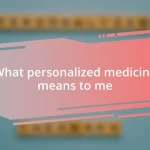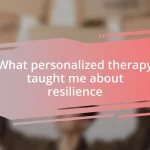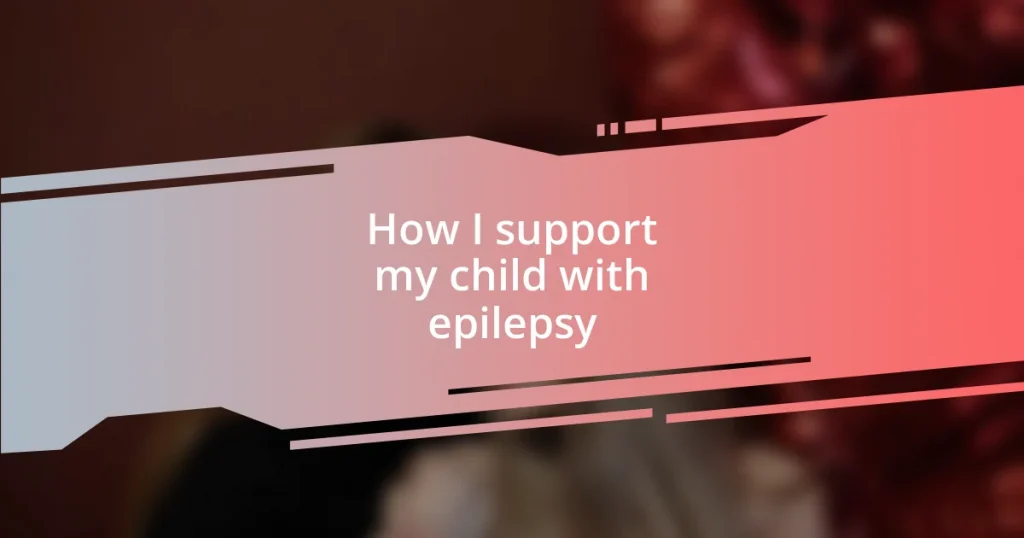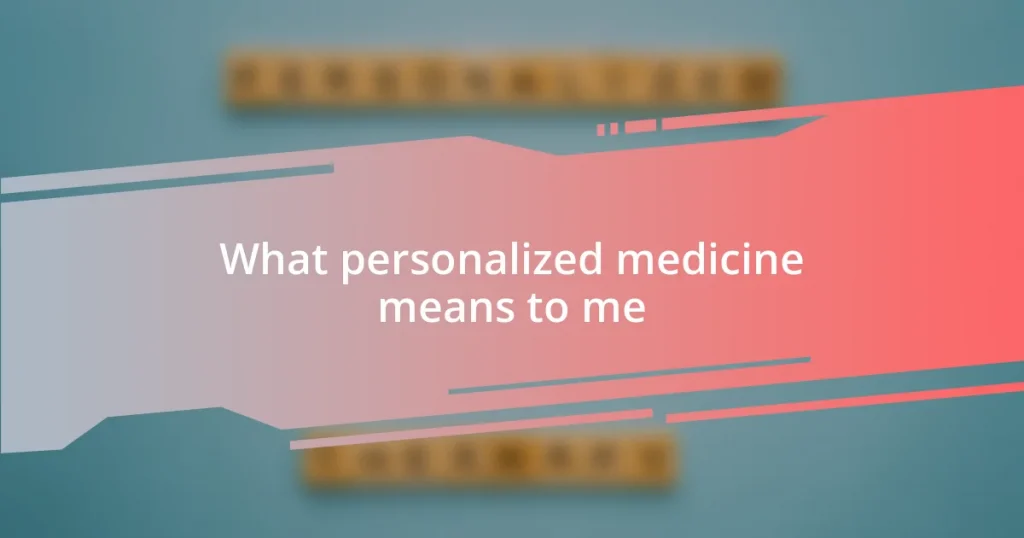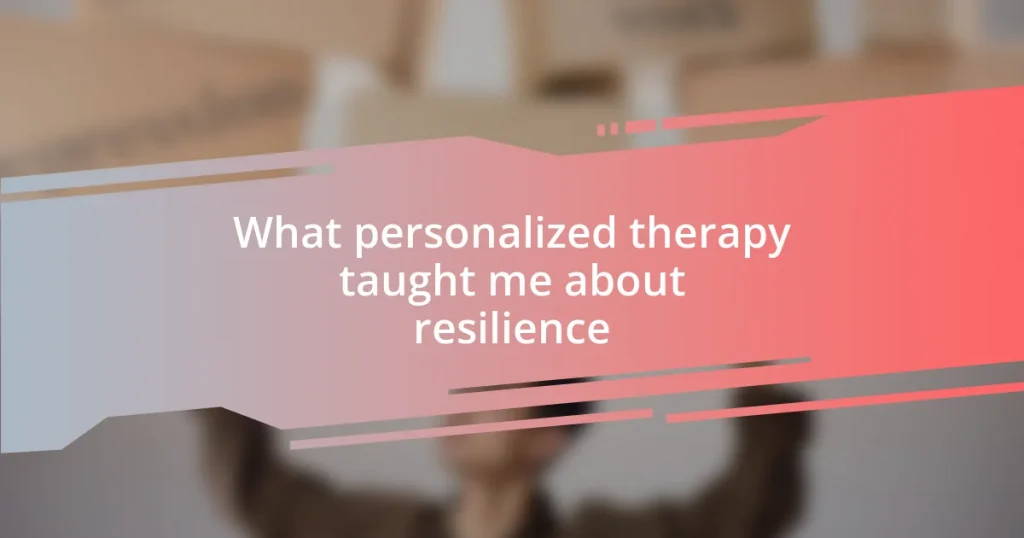Key takeaways:
- Understanding the various types of seizures and their symptoms is crucial for responding appropriately and educating those around your child.
- Creating a safe home environment and open communication about safety measures enhances both physical safety and emotional security for the child and family.
- Encouraging independence through self-management tools, supportive conversations, and celebrating small victories fosters emotional well-being and resilience in children with epilepsy.
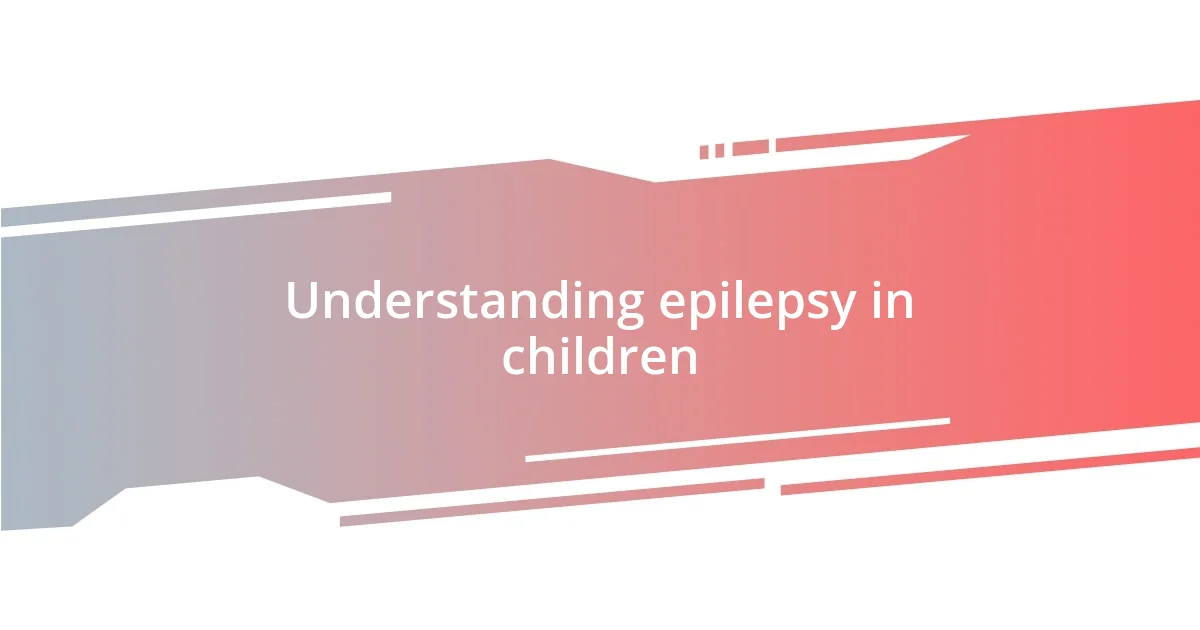
Understanding epilepsy in children
Epilepsy in children is often misunderstood, and that can be quite challenging for both the child and the family. I remember the first time my child had a seizure; it felt like my world paused. I had so many questions racing through my mind—Why is this happening? What does it mean for his future? Each child experiences epilepsy differently, making it crucial to understand that their symptoms might not look like what you see on TV.
There are various types of seizures, ranging from brief lapses in attention to full-body convulsions. In my experience, learning about these differences helped me distinguish between a typical day and a medical emergency, giving me the confidence to respond appropriately. Did you know that about 1 in 100 children in the United States have epilepsy? This statistic helped me realize we are not alone on this journey; there are countless other families who share similar experiences.
Navigating the world of epilepsy involves understanding not just the medical aspects but also the emotional impact it has on our children. I’ve seen my child worry about being different, grappling with feelings that are difficult to articulate. When we talk openly about epilepsy, I find it encourages him to express his fears, turning what could be a source of stress into an opportunity for connection and understanding. Isn’t it amazing how knowledge can transform fear into hope?
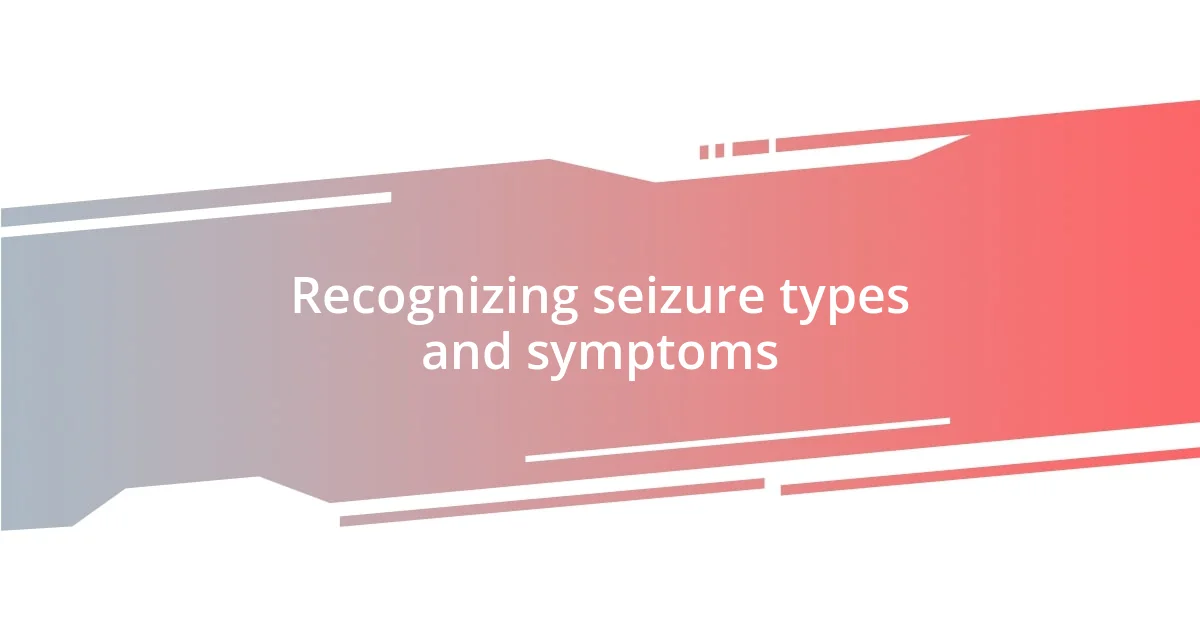
Recognizing seizure types and symptoms
Recognizing the different types of seizures my child experiences has been an eye-opener for me. I’ve learned that seizures can vary widely, from subtle moments of staring to dramatic shaking. This range can sometimes lead to confusion, especially in public settings. For instance, I remember a time when my child had a complex partial seizure at a family gathering. Watching the confusion on others’ faces was tough, as they didn’t know what was happening. Educating myself—and those around me—made a significant difference.
Here’s a breakdown of some seizure types and their symptoms that I’ve found helpful to recognize:
- Tonic-Clonic Seizures: Involve stiffening of the body followed by rhythmic jerking of the limbs. I’ve seen this one; it’s alarming and requires quick intervention.
- Absence Seizures: Briefly disrupt awareness, causing my child to stare blankly. I often find it’s mistaken for daydreaming.
- Focal Seizures: May cause unusual sensations or movements in one area of the body. I recall my child blinking rapidly during one of these, and I thought he was just tired.
- Myoclonic Seizures: Characterized by quick, jerky movements, sometimes resembling a startle response. This can be a little disorienting to witness.
- Atonic Seizures: Result in a sudden loss of muscle tone, causing falls. I’ve had a couple of heart-stopping moments when my child dropped to the ground unexpectedly.
Being aware of these signs has empowered me to act quickly and inform others, which transforms an overwhelming experience into manageable moments.
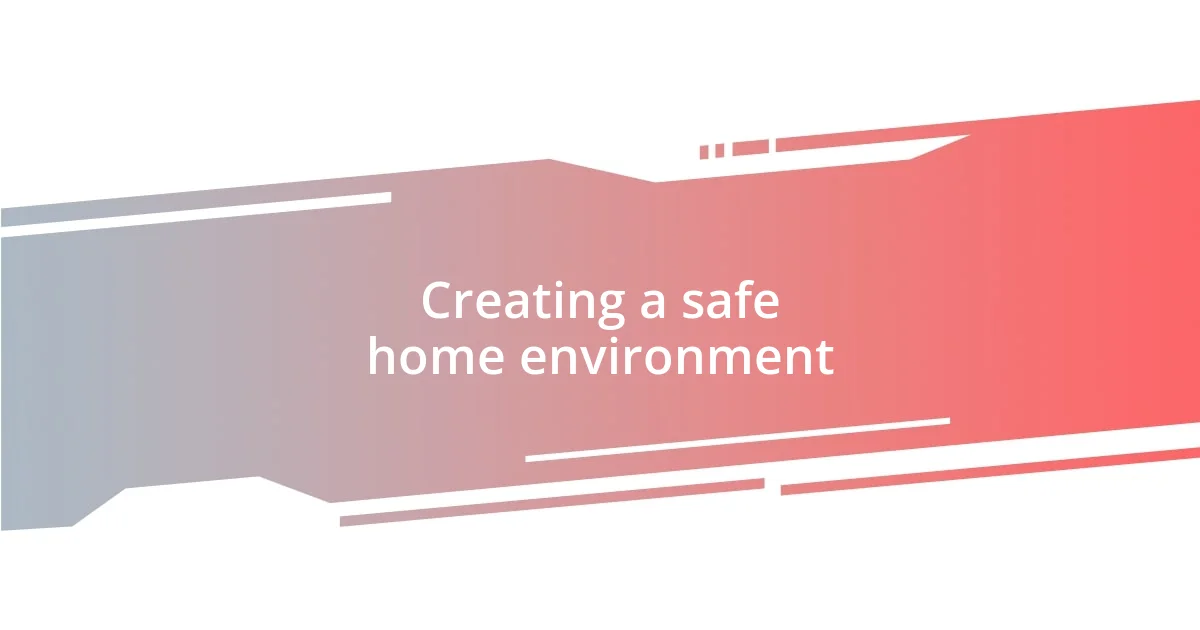
Creating a safe home environment
Creating a safe home environment involves modifying our space so that it reduces the risk of injury during a seizure. For instance, I’ve swapped out sharp-edged furniture for softer alternatives and secured heavy items on shelves. One night, my child had a seizure during dinner; it was upsetting but also a turning point because I realized that the changes I made kept him safe while he was vulnerable.
In the bathroom, I learned it’s vital to avoid slippery surfaces and sharp objects. Installing a non-slip mat in the bathtub has brought me peace of mind. I also use talked about turning on warm water instead of hot and keeping any toiletry items out of reach that could be dangerous. During another episode, my little one slipped as they exited the tub, and thankfully, my precautions made all the difference.
Communication with everyone in the household about the adjustments is crucial. I remember having a calm conversation with everyone about what to do in case of a seizure and the importance of these safety measures. I felt a weight lifted off my shoulders, knowing we were all on the same page. A safe home environment goes beyond physical changes; it creates a sense of security for both my child and me.
| Room | Safety Modifications |
|---|---|
| Living Room | Remove sharp furniture edges and secure heavy items |
| Bathroom | Install non-slip mats and keep sharp objects out of reach |
| Kitchen | Store knives and harmful substances on higher shelves |
| Bedroom | Use padded railings on beds and eliminate tripping hazards |

Effective communication with healthcare providers
Effective communication with healthcare providers is crucial when managing my child’s epilepsy. I’ve learned that preparing for appointments makes a world of difference. I jot down questions and concerns ahead of time, ensuring I cover essential topics during our limited time. For example, during a recent visit, I asked about adjusting my child’s medication due to increased seizure frequency, and the doctor was able to provide valuable insights that alleviated my worries.
I can’t stress enough the importance of being my child’s advocate during these discussions. I often find myself sharing observations about my child’s seizures and how they affect daily life. During one appointment, I described an instance where my child experienced a prolonged seizure, which prompted the doctor to explore additional monitoring options. It felt empowering to take an active role in my child’s care. Have you ever felt unsure about speaking up? I’ve been there, and it’s important to remember that our input can lead to better treatment plans tailored to our child’s specific needs.
Establishing a rapport with healthcare providers is another key aspect. I’ve found that building a relationship over time fosters openness and trust. In one memorable conversation, my child’s neurologist shared a personal story about their own family member with epilepsy. That moment humanized our experience and made me feel more connected to the care my child was receiving. It’s these small, yet meaningful exchanges that can transform a clinical environment into a supportive partnership.
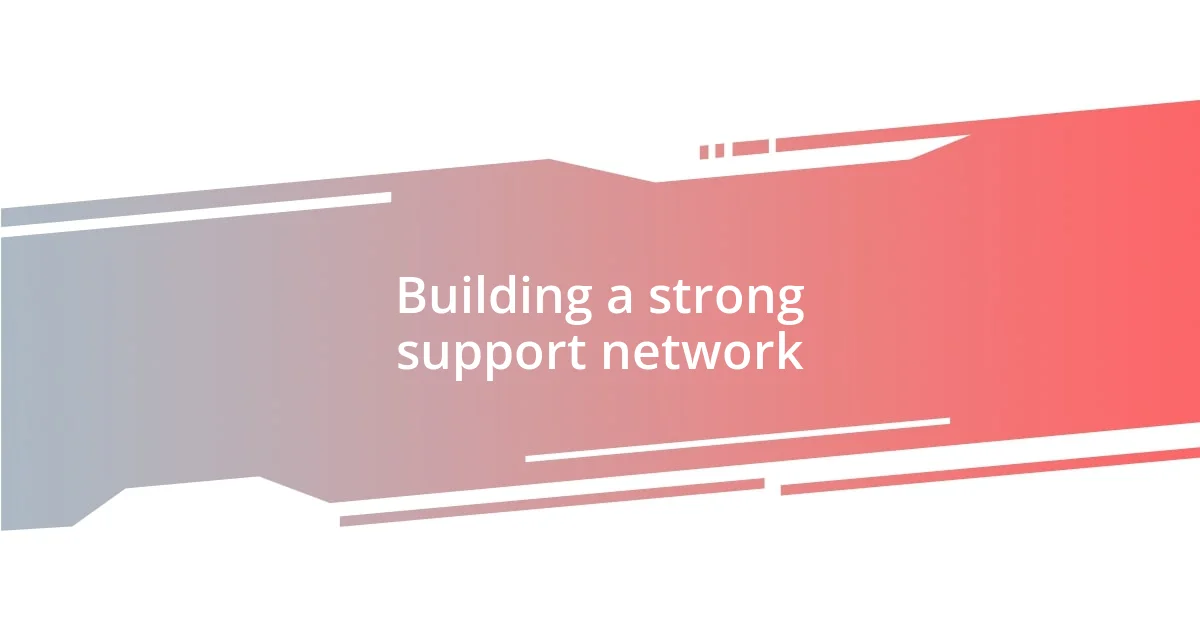
Building a strong support network
Building a strong support network is essential for both my child and myself. I remember the day I reached out to other parents in my community who also have children with epilepsy. Their understanding and shared experiences were incredibly comforting; it felt like I had found my tribe. I often ponder: how can sharing our journeys help us grow stronger together? In those candid conversations, we not only exchanged tips and resources but also offered emotional support that really made a difference.
I’ve also discovered the importance of engaging with local support groups. Attending a monthly meeting has allowed me to connect with others who truly understand the challenges and triumphs of living with epilepsy. One evening, I listened to a parent recount a proud moment where their child overcame personal hurdles related to their condition. I couldn’t help but feel inspired and hopeful, knowing that I wasn’t navigating this journey alone. Have you ever felt a sense of belonging just by sharing a struggle? That’s what these gatherings provide—a safe space to be vulnerable and uplift one another.
Additionally, I’ve found that open communication with family and friends strengthens my support network even further. For example, I talk openly about what my child experiences and how they can help. Just the other day, a close friend offered to join me at the next doctor’s appointment to lend a hand with notes and questions. Their willingness to step in reminded me how meaningful these connections can be. It’s amazing how a simple conversation can lead to tangible support when you need it most. Wouldn’t you agree that reaching out can truly lighten the load?
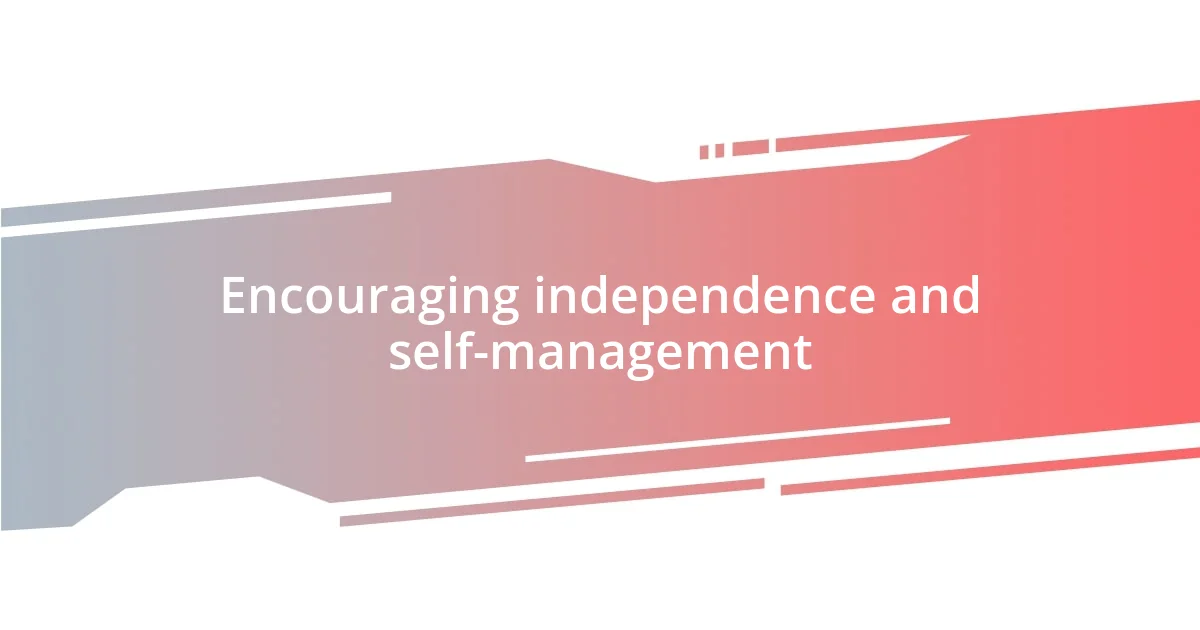
Encouraging independence and self-management
Encouraging independence in my child with epilepsy has been one of the most rewarding yet challenging parts of our journey. I remember when my child first learned to recognize the signs of an impending seizure. The look of pride on their face was priceless—it’s a moment I’ll treasure. How do you encourage your child to advocate for themselves? I found that providing them with simple tools, like a seizure awareness bracelet, not only builds their confidence but also helps them feel more in control.
Self-management goes beyond just acknowledging seizures; it’s also about teaching my child to track their health. We created a daily seizure journal together, where they note their mood, triggers, and medication. This not only promotes awareness but also helps them identify patterns over time. I was amazed by how quickly my child took ownership of this task. Have you ever seen your child light up by taking charge of their health? It’s a small step that leads to remarkable empowerment.
Supportive conversations are key. I frequently ask my child about their feelings regarding their condition and any concerns they may have. One night, we sat down over ice cream, and my child opened up about feeling anxious at school. Listening without judgment made all the difference. These chats foster trust, allowing my child to express needs and preferences, reinforcing their sense of independence. Don’t you think that encouragement stems from understanding?
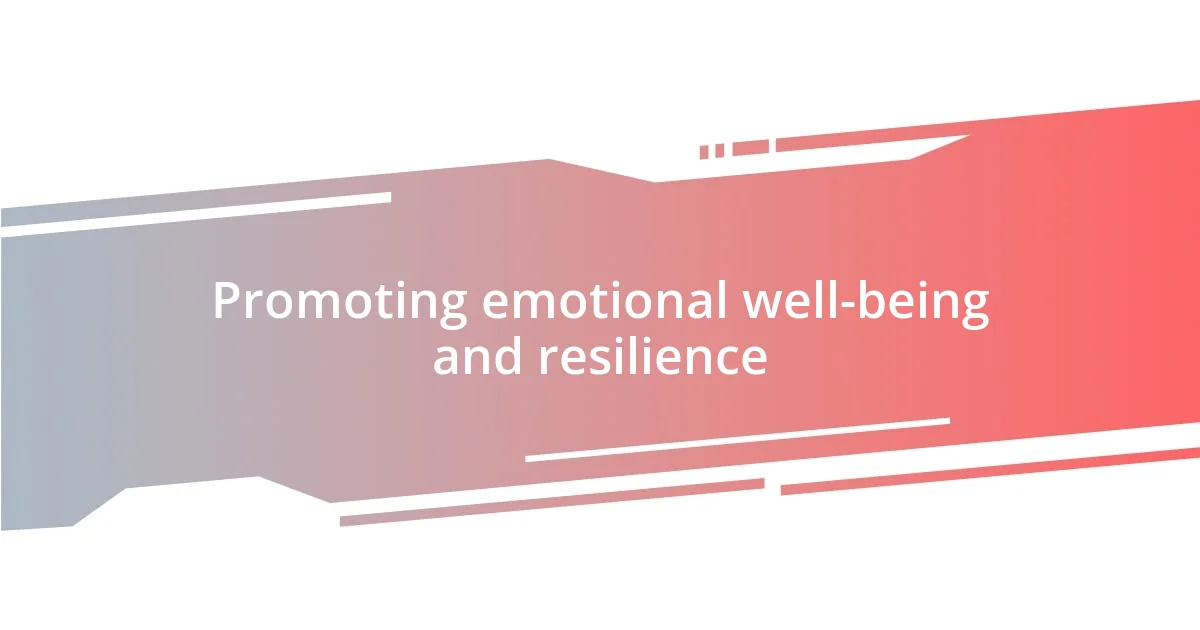
Promoting emotional well-being and resilience
One of the most impactful ways I’ve found to promote emotional well-being in my child is through regular family check-ins. We dedicate Sunday afternoons to discussing our feelings and experiences over a cozy blanket fort. Just last week, my child opened up about feeling left out during a school project because they were unable to participate in certain activities. Conversations like this not only validate their emotions but help them grasp the importance of expressing feelings. Can you recall a moment when listening made a significant difference in someone’s life?
Additionally, I encourage engagement in mindful practices like deep breathing or yoga, which can be soothing during stressful moments. I’ll never forget the first time we tried guided imagery—my child nearly giggled through the whole session at their own imagination! This light-heartedness turned what could be a daunting experience into a fun practice. These tools not only aid my child in managing anxiety but also foster resilience, giving them methods to cope with life’s challenges. Have you ever experienced joy in finding solutions together?
Celebrating small victories has become a cornerstone in our home. Whether it’s successfully navigating a social situation or taking ownership of their health, I make sure we acknowledge those moments together. One evening, my child proudly shared that they spoke up in class about needing a break during a lesson. The joy in their eyes as we toasted to that achievement with hot cocoa was a reminder of the strength they possess. Don’t you agree that recognition can motivate growth and confidence in our children?

